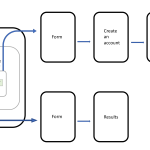Hi there!
I have a question about the toolset form on my website. My developer made a quiz with Toolset that recommends three products to every user based on the answers of the quiz.
I currently have a problem with that quiz because when the users already have an account and they are not logged in, the users take the quiz and then at the end, they put their e-mail and it says they should log in and redo the quiz. This causes a lot of my users to abandon their session because they don't want to take the quiz again.
Here is the link to the toolset form I am refering: hidden link
I was thinking about the possibilities to solve that issue and I would really like if the users on my website could log in at the start of the quiz or continue as their first time and create an account. If they logged in right at the begin they wouldn't have this problem.
Could you help me with this?
Thank you,
Savannah
Hi Savannah,
Thank you for contacting us and I'd be happy to assist.
If your goal is to only show the Form to the logged-in users, you can wrap its shortcode inside a conditional check.
( ref: https://toolset.com/documentation/legacy-features/views-plugin/using-shortcodes-in-conditions/ )
For example, the 'wpv-user' shortcode will return the currently logged-in user's username and nothing for a non-logged-in guest.
( ref: https://toolset.com/documentation/programmer-reference/views/views-shortcodes/#wpv-user )
You can use this in a conditional display statement like this:
[wpv-conditional if="( '[wpv-user]' ne '' )"]
[cred_form form="example"]
[/wpv-conditional]
[wpv-conditional if="( '[wpv-user]' eq '' )"]
[wpv-login-form allow_remember="true"]
[/wpv-conditional]
When the visitor is a logged-in user, he/she will see the form named 'example'. And in case of a guest, he/she will see a login form, through the 'wpv-login-form' shortcode.
( ref: https://toolset.com/documentation/programmer-reference/views/views-shortcodes/#wpv-login-form )
I hope this helps and please let me know if you need any further assistance around this.
regards,
Waqar
Hi Waqar,
In fact, what I would like is for the form to appear for both types of users: those who have an account and those who don't.
I would like that at the beginning of the form there is the possibility to connect OR to continue the quiz as a guest.
The user who already has an account would log in from the start of the form.
The user who does not have an account would click on "continue as a guest", take the quiz and then end create an account.
Let me know if it world be possible. I also did a graphic of what I mean so you can understand better my idea.
Thank you!
Thanks for writing back.
A single Toolset Form can be used either to add a new user or edit an existing one, but not for both.
For what you're planning, you can make a duplicate of your form, so that one is for adding a new user and the other one is for editing an existing one.
After that on your main starting page, you can show the option to either log in using the existing user's details or click the continue as a guest link.
Upon successful login, the user can be redirected to the form to edit the existing user and continue as a guest link will lead to the form to add a new user.
